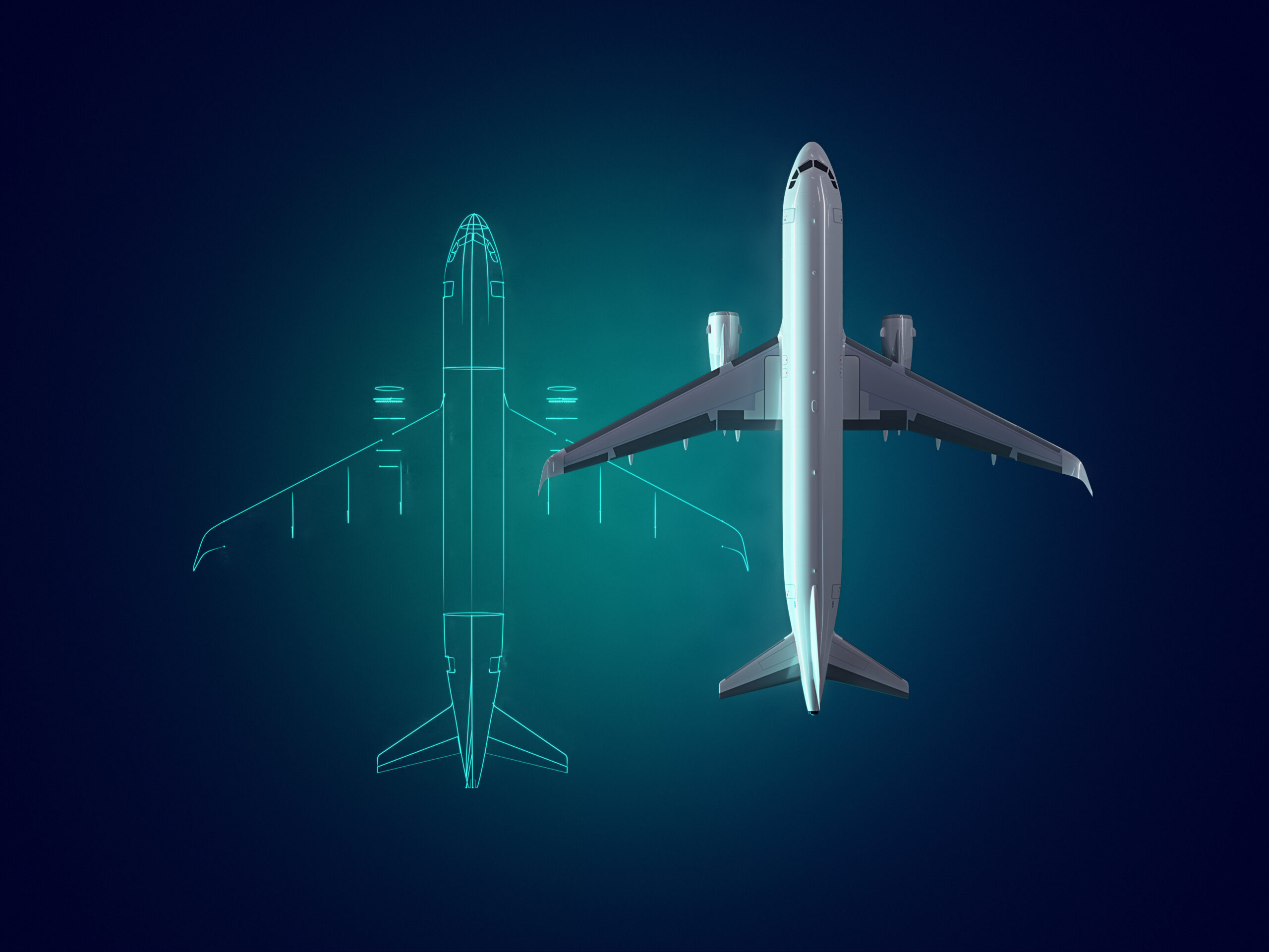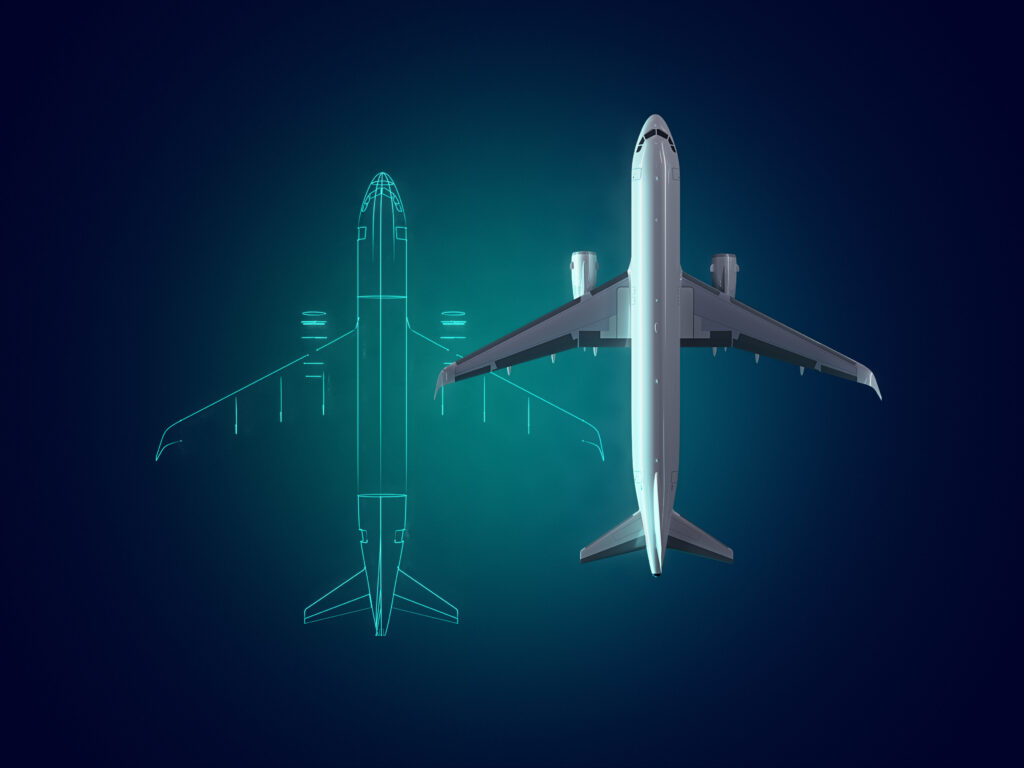How the digital twin transforms the future of sustainability and aviation

The global impact of climate change has led to extensive research on fueled aircraft propulsion systems since commercial aviation contributes about 4.9 percent of total global fossil fuel emissions. Mandated by the United Nations Framework Convention on Climate Change (UNFCCC), the aviation industry is required to achieve carbon neutrality by 2050, with the transition from jet engines powered by hydrocarbons to propulsion systems that use alternative climate-neutral energy sources. Established by the Paris Agreement in 1995 as a legally binding international treaty on climate change, aviation manufacturers and their suppliers must adopt new solutions to meet this task. Currently, about 1.9 billion tons of CO2 is emitted from aircraft annually, so aircraft companies are trying to find ways to reduce emissions while increasing fuel efficiency to meet the Paris Agreement goals. One approach to achieve this target is with the digital twin to speed the development of advanced aircraft systems that meet both high performance and carbon neutrality for a sustainable future.

The 196 country members supporting the Paris Agreement established an enhanced transparency framework (ETF) that requires them to report on plans, actions and progress made towards climate change improvements starting next year (2024). The information collected through the ETF will be assessed and recorded, thereby providing international procedures and recommendations for countries to establish ambitious plans for next wave of reviews by participants which occur every five years.
To ensure that the aviation industry achieves the terms of Paris Agreement, the aviation industry is required to transform their operations by seeking alternative energy sources, such as hydrogen and batteries. This translates to massive changes to the design and engineering of aircraft and aviation systems. By adopting digitalization methods, such as the digital twin, manufacturers can realize the speed and reliability to redesign or develop new energy systems successfully.
Design challenges to meet zero emissions goal
The use of electric batteries and hydrogen fuel provide the environmental benefits for aviation but there are still limitations in their use. Batteries rely on stored electricity to power aircraft, and they do not produce emissions – however, they are not ideal for passenger aircraft due to their heavy weight, and the energy density is extremely low. Conversely, hydrogen fuel provides higher energy density compared to fossil fuels and produces only water when combusted. However, hydrogen is extremely difficult to store and requires large containers to prevent hydrogen gas from seeping or advanced cryogenic systems for liquid form for storage. Either option provides the potential for sustainability, but they still both have their limitations.
As the industry transforms to comply with the Paris Agreement, aircraft design must change to better manage sustainable energy storage, either through additional batteries, hydrogen fuel cells or redesigning the aircraft wing configuration to increase fuselage space for hydrogen fuel storage. This requires aircraft redesign. In addition, airports and ground-based infrastructure must be able to support these new energy sources. Examples include charging stations for battery-powered aircraft or hydrogen storage facilities – all to achieve the zero emissions goal for 2050.
The digital twin solution
Aircraft manufacturers can overcome these design challenges quickly and cost-effectively by implementing a comprehensive digital twin with software simulation and test tools. The digital twin is a virtual representation of a product, providing an integrated design environment for multi-disciplinary aerospace engineering teams. Digitalization tools and software available within the Siemens Xcelerator open digital business platform allows engineers to easily model, test and analyze the impact of alternative energy sources on new aircraft configurations from the component level to an entire integrated aircraft. By applying Siemens Xcelerator software tools, engineers can optimize their designs and make vital engineering decisions earlier in the product development process, allowing sustainable aircraft designs to be evaluated and tested virtually, thereby saving time and resources that would otherwise be used for extensive testing and prototyping.
Digitalization software can also be used to transform the aviation industry’s infrastructure by determining new sustainable aircraft configuration requirements earlier. The design requirements data can then be applied to strategizing the supply chains to build the necessary support structures for aircraft. By the time the new sustainable aircraft are ready for operation, airports and hangars can access the necessary information to successfully launch and maintain the next generation of aviation with minimal risk.
Greener skies ahead
The race to transform the aviation industry to meet the sustainability goal of zero emissions is challenging, but also exciting. Alternative energy sources like electric batteries and hydrogen fuels provide great potential for a greener, more sustainable world but this requires massive transformations to individual aircraft and the entire industry. On a positive note, the digital twin enables aircraft manufacturers and their suppliers to successfully manage the challenges early, providing a competitive advantage for technology innovation and first-to-market profitability. Together with the Siemens Xcelerator software portfolio, the aviation industry can realize the successful transformation for a cleaner, brighter future for the planet.
To learn how the digital twin can be applied to achieve sustainable aviation, download Siemens Digital Industries Software white paper. The paper covers the technical and environmental conditions for today’s leading propulsion systems, and how to transform the next-generation of aircraft design and the aviation supply chain by using digitalization solutions such as the comprehensive digital twin for new sustainable aircraft design.
Download the free paper, “Paving the way to sustainable aviation by 2050” now.


